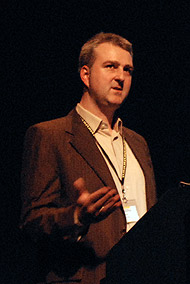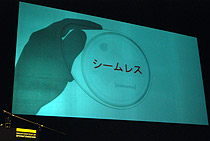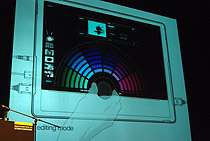 How can product design change through interface design? Interface-guru Gui Bonsiepe says that it essentially is the design of interfaces. Jacob’s own office human interface.design is focussed on multidisciplinary approaches to the interaction with technical products of any kind.
How can product design change through interface design? Interface-guru Gui Bonsiepe says that it essentially is the design of interfaces. Jacob’s own office human interface.design is focussed on multidisciplinary approaches to the interaction with technical products of any kind.
One particular project was to design a new phone interface for Siemens for which they developed a way of visualizing how close a friend the calling person is to the owner of the phone through flashing rings in the middle of the device. Jacob is also a professor at Muthesius Kunsthochschule in Kiel, Germany. Key to his approach with both commercial and academic projects is a profound knowledge of usability engineering and early and creative prototyping.
User-centered design means that people should be included in the process way before the technological side is finished. Often, this requires the creation of physical electronic prototypes. A basic example is human interface’s MuC machine in which they taped knobs on an old-fashioned CRT-screen and even though the change seems rather simple, the sensation of being able to “twist” the application for many changed their experience a lot. Is there a revolution about to happen in product design due to the influence of interface design? Theorist Norbert Bolz says that, in order to make people use something, he or she has to help people overcome a certain fear of technology. Prime example is the iPhone, which, despite not adding great new features, has had a very disruptive effect already. It might be the multi-touch interface which might introduce a very-much welcomed new way of interaction that will probably influence countless other products.

 Ubiq and cue
Ubiq and cue
Similar gestural approached were designed by some of his students, for example Ubiq, a universal translator-device which uses a form of augmented reality. cue on the other hand is a VJ-tool which trough a tactile interface allows to easily play back and manipulate video samples.
